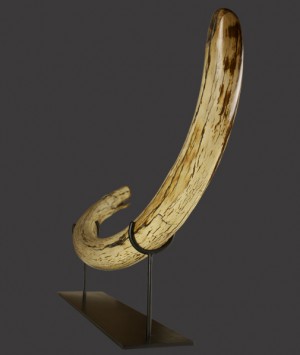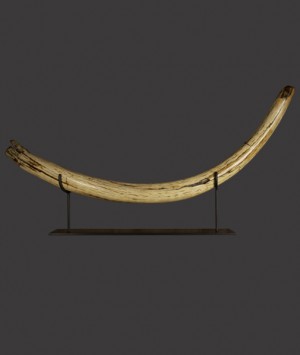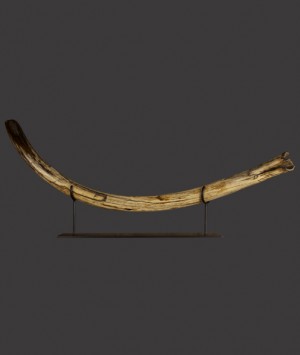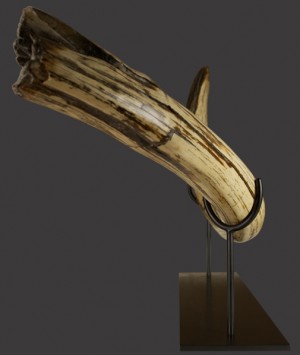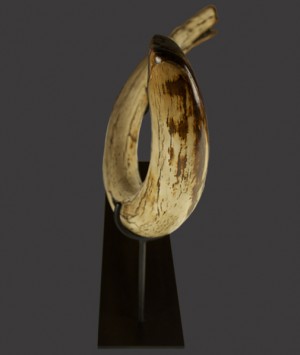Item number: 5276
A Rare, Large British Woolly Mammoth Tusk, ‘Mammuthus Primigenius’
Pleistocene Epoch, Approximately 60,000 Years Old
Discovered in Norfolk During the 1970’s
Ex English Private Collection
The county of Norfolk is an area well known for its rich archaeology, it lies in a part of the country known as East Anglia, which preserves the fullest narrative of the Pleistocene, or ‘Ice Age’, to be found in the United Kingdom. Fossilised Mammal remains have been collected around its coastline since at least the 19th century, with inland quarrying activities also yielding many important discoveries, contributing enormously to our knowledge and often altering our perception of this little understood period in Earths history and mankind’s evolution. The importance of studying this most recent and dramatic episode in our geological past should not be underestimated, as the well preserved fossils often provide informative data which, when analysed can provide a valuable insight in to Earth’s previous climates, increasing our knowledge and allowing us to better understand and perhaps predict the impact future climate changes may have.
The Mammoth was well adapted to its sub-arctic environment, its enormous, curved tusks could be used to clear snow, enabling it to feed on the otherwise buried vegetation beneath, its large teeth consisted of a series of enamel plates which provided an extremely effective means for grinding ingested material to a pulp. The Mammoths distinctive form is perhaps best recorded in simple, but amazingly effective cave paintings produced by our ancient ancestors, the creature has become something of a icon and remains one of the best known and easily recognisable of all pre-historic animals. The species is believed to have fallen in to decline as the result of climactic and environmental change however its ultimate extinction was undoubtedly aided by enthusiastic predation by early man.
Most mammoth tusk discoveries occur in frozen environments such as in Siberia, where due to the conditions they have often survived in their organic state. On occasion they are recovered from the North sea by fishermen, usually in fragmentary and often rather unstable condition. Almost all recovered examples worldwide are deeply stained.
This magnificent tusk specimen displays a beautiful surface colour and patination particularly to the tip, well worn from use. It represents a rare and noteworthy inland discovery from an region synonymous with the ‘Ice age’, in Britain.
Dimensions (Approximate)
Length: 150cm, Actual Length: 173cm (Following contour of tusk), Overall Height: 68cm (At highest point, including stand)

